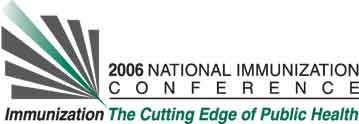Gary S. Marshall, Pediatric Infectious Diseases, University of Louisville School of Medicine, 571 South Floyd Street; Suite 321, Louisville, KY, USA, Laura E. Happe, Applied Health Outcomes, 4114 Woodlands Parkway, Suite 500, Palm Harbor, FL, USA, and Agartha Russell, Maternal and Child Health Section, Georgia Department of Community Health, 2 Peachtree St, NW, 37th Floor, Atlanta, GA, USA.
Learning Objectives for this Presentation:
By the end of this presentation, participants will be able to:
1. Describe the potential impact of timeliness on vaccination outcomes
2. Describe timeliness of DTaP in a state Medicaid population
3. Understand the association between first-year and second-year timeliness
Background:
Nationally, less than one-third of children receive their vaccinations on time. This may lead to an increased risk of vaccine-preventable diseases and contribute to an incomplete vaccination schedule. Delayed vaccinations in the first year may predict delays in subsequent years.
Objectives:
To assess the impact of on-time first, second, and third DTaP doses (first-year primary series) on timeliness of the fourth dose of DTaP (second-year booster dose) in a state Medicaid population.
Methods:
Infants born between January and March, 2003, who were continuously enrolled for at least 24 months following birth, and had received at least one recommended vaccination were identified from Medicaid administrative claims of the Georgia Department of Community Health. Timeliness of administration of the recommended vaccines over 24 months was evaluated by comparing actual vaccination dates with the recommended schedule, as described (Luman. JAMA. 2005;293:1204-1211).
Results:
A total 1,894 children were identified, of whom 44.1% (n=836) had on-time and 55.9% (n=1,058) had delayed first-year DTaP shots. Children with delays in their first-year DTaP were significantly less likely be on-time for their second-year DTaP, as compared to children who had on-time first-year DTaP (21.6% vs 81.2%; odds ratio 0.06; p<0.0001).
Conclusions:
Children who have delays for the primary DTaP series were significantly more likely to be delayed for the fourth dose of DTaP. While improving timeliness of first-year DTaP may improve the likelihood of being on-time for the second-year DTaP, first-year timeliness may also serve as a marker for children with inherently poor vaccination compliance.
See more of Posters
See more of The 40th National Immunization Conference (NIC)

